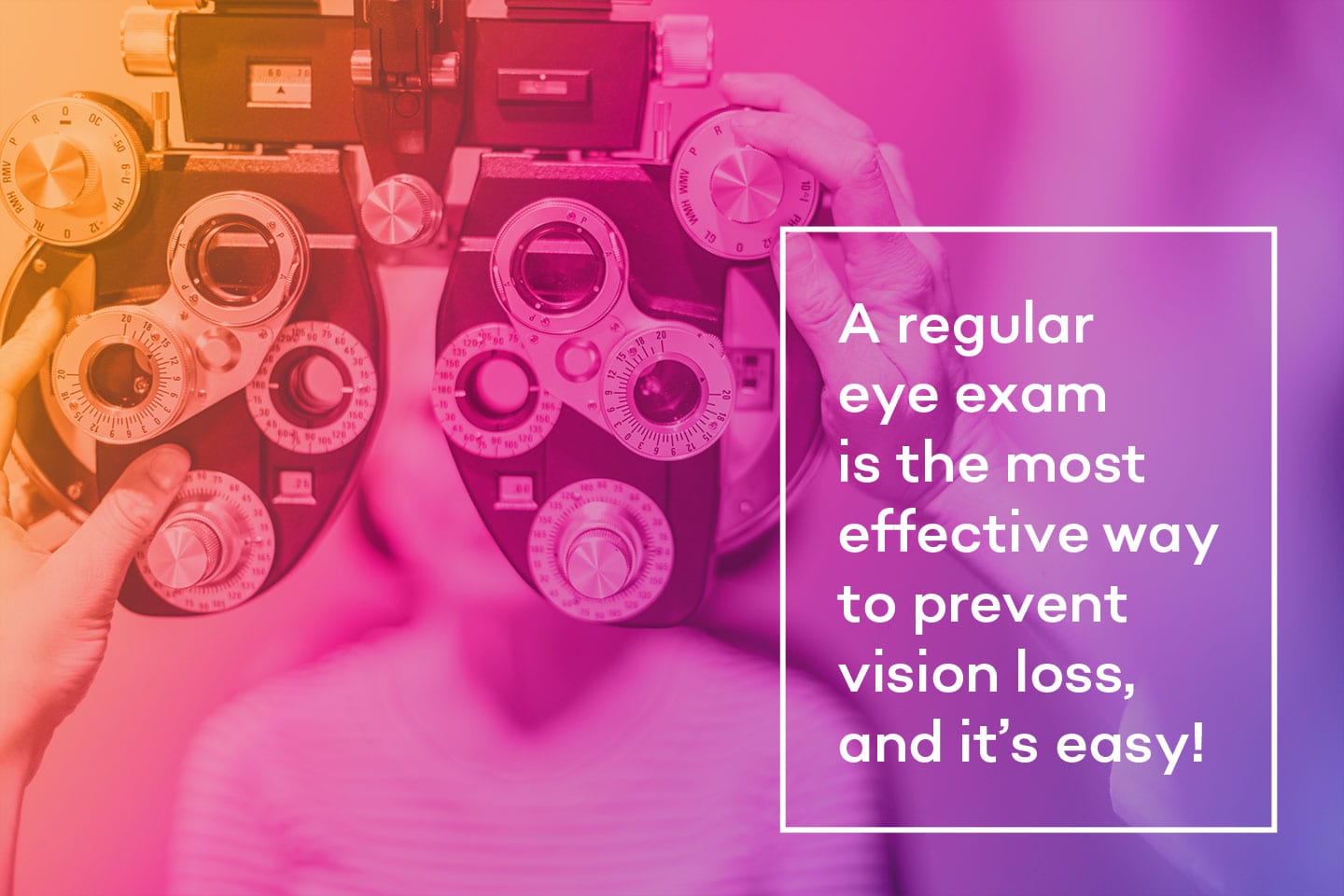There are more than 40 million people aged 65 or older living in the United States, and that number is expected to climb to more than 88 million by 2050. Considering our eyes, like the rest of our bodies, experience natural changes associated with aging, it’s time we get serious about our vision health. Age-related eye diseases are expected to double in the next 30 years, and the number of people living with low vision will likely triple.
It’s not hard to imagine how much a loss of vision can impact your quality of life. Fortunately, though, if caught early, many eye-related problems can be treated safely and efficiently. Let’s take a look at common vision problems, ways to prevent vision loss, and why it’s important to schedule that regular eye exam.
By Lucy Morris
Vision and Aging


Ophthalmologist,
Chattanooga Eye Institute
Our vision changes as we get older – it’s just part of the aging process. Over time you may start to notice you’re having trouble seeing objects as clearly as you once could, or you may have a bit of trouble distinguishing similar colors. These are common issues that occur naturally with the aging of the eye. Dr. Charles Kirby, an ophthalmologist with the Chattanooga Eye Institute, explains, “As you get older, the natural lens of your eye changes shape and becomes less flexible. That’s why you often see people purchasing reading glasses around their mid- to late-40s.”
But there is a difference between normal vision changes and higher risk diseases and conditions that require treatment, which can include:
Cataract – Cataract is clouding of the lens that can cause vision loss. “With cataracts, you tend to have trouble distinguishing colors, difficulty reading, difficulty driving – everything becomes distorted,” says Dr. Kirby. “These can range in severity, but in a vast majority of cases, surgery can restore a patient’s vision if there’s not another underlying problem.”
Age-Related Macular Degeneration (AMD) – For adults 50 and older, AMD is the leading cause of vision loss and blindness. “Your macula is the portion of your retina where your central vision is located,” says Dr. Kirby. “With AMD, your retina is damaged – whether from thinning or abnormal blood vessel growth that causes scarring – and it results in a dead spot in the middle of your vision.” Depending on the particular case, numerous treatment options are available to reduce the risk of vision loss for patients with AMD.
Glaucoma – Glaucoma is a group of diseases that cause fluid pressure to build up inside the eye. “When the pressure gets too high, it damages the optic nerve, which leads to a loss of vision,” explains Dr. Kirby. “Glaucoma is basically the opposite of AMD, because with glaucoma, you retain your central vision but lose your peripheral vision.” With glaucoma, treatment is focused on lowering the pressure in the eye through prescription eye drops, oral medications, laser treatment, surgery, or a combination of methods.
Diabetic Retinopathy – As the name suggests, diabetic retinopathy involves damage to the retina caused by diabetes. Dr. Kirby explains, “With diabetic retinopathy, the blood vessels in the retina can swell, leak, or become occluded (blocked), which can cause bleeding and scarring because the retina is not getting enough oxygen.” Mild cases can be treated with diabetes management, while more severe cases may require laser treatment or surgery.
If left untreated, these common age-related eye issues can result in low vision, which can be debilitating. “Low vision is a loss of vision that cannot be corrected by medical or surgical treatments, or through conventional glasses,” says Dr. Kirby. “If you can’t see as well as you want to, it will affect your life, whether through employment, daily tasks, or the enjoyment of hobbies. It can lead to a loss of independence and can just be a major adjustment.”

Preventing Vision Loss
Unfortunately, many of these common conditions and diseases don’t show warning signs until they are more advanced. But there is an upside. “While these issues may not produce early symptoms, they can be detected in their early stages through an eye exam,” says Dr. Kirby.
A regular eye exam is the most effective way to prevent vision loss, and it’s easy! During the exam, your doctor will dilate your pupils using eye drops and then examine your optic nerve and retina for signs of disease. “A pediatrician should always complete a vision screening for a newborn, and all children should receive an eye exam before they start school, but for adults with normal eyes and no risk factors, we recommend a screening at age 40,” says Dr. Kirby. “When you become a senior, around age 60 to 65, you need to have an eye exam yearly because you’re more likely to have a problem, and catching it early can help tremendously.”
In addition to regular eye exams, there are a few other factors that can help lower your risk for vision issues. Eating a balanced diet that includes dark, leafy greens and foods high in omega-3 fatty acids is first. Maintaining a healthy body weight is also paramount. If you smoke, you should quit. It’s important to wear protective eyewear and sunglasses as well. Wearing brimmed hats while in the sun can also reduce damage. Lastly, know your family’s eye health history and discuss it with your doctor.

